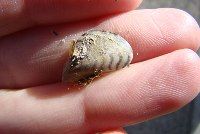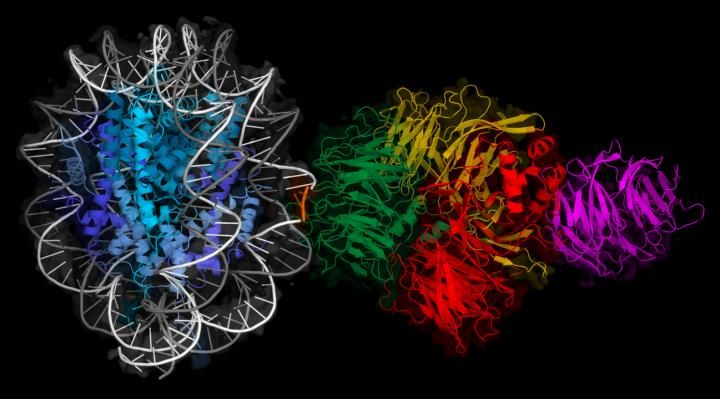Stanford scientists solve mystery of arsenic release into groundwater
Groundwater in South and Southeast Asia commonly contains concentrations of arsenic 20 to 100 times greater than the World Health Organization's recommended limit, resulting in more than 100 million people being poisoned by drinking arsenic-laced water in Bangladesh, Cambodia, India, Myanmar, Vietnam and China.

One of the artificial pits made to simulate the permanent wetlands within the variable wetland site.
Scott Fendorf
Stanford scientists have solved an important mystery about where the microbes responsible for releasing dangerous arsenic into groundwater in Southeast Asia get their food. Their findings could guide future land management and future development.
Arsenic is bound to iron oxide compounds in rocks from the Himalayas, and gets washed down the major rivers and deposited in the lowland basins and deltas. Scientists know that in the absence of oxygen, some bacteria living in those deposited sediments can use arsenic and iron oxide particles as an alternative means of respiration. When they do this, however, the microbes separate the arsenic and iron oxides and transfer the toxin into underlying groundwater.
The mystery in this system, though, is an obvious source of energy that the microbes can tap to fuel the separation process.
"The question that really limits our ability to come up with predictive models of groundwater arsenic concentrations is how and why does the food they use vary across the landscape and with sediment depth," said Earth system scientist Scott Fendorf , a professor at Stanford's School of Earth, Energy & Environmental Sciences.
Field experiments
In their study, Fendorf and his team wanted to determine if the arsenic-releasing microbes were feeding on recent deposits of plant material located near the surface, or whether they were tapping into older biomaterial buried deeper in the subsurface. A second question they wanted to answer was, How does arsenic release vary across the landscape in Asia?
To address these questions, Fendorf and his team performed a series of field experiments. They collected sediment cores from two types of environments in the Mekong Delta in Cambodia: seasonal wetlands – where the soil is saturated by rainwater for only part of the year – and permanent wetlands, which are continually inundated.
"We focused on wetlands because that is the dominant type of landscape found in Cambodia, Vietnam and other countries affected by arsenic contamination," said Fendorf, who is the Huffington Family Professor in Earth Sciences and also a senior fellow, by courtesy, at the Stanford Woods Institute for the Environment.
Mixing sediments collected from different depths in vials with artificial groundwater revealed that the oxygen-deprived bacteria living in the upper few feet of permanent wetlands were releasing arsenic. However, water mixed with sediments gathered from the same shallow layers of seasonal wetlands was arsenic free.
The Stanford scientists hypothesized that bacteria residing in the shallow layers of seasonal wetlands were eating all of the digestible plant material during dry periods, when sediments are exposed to air and the microbes have access to oxygen. As a result, no food is left for the microbes when the floods returned, rendering them unable to cleave arsenic particles from iron oxides.
This hypothesis was confirmed when the scientists added glucose – a carbon-rich and easily digestible sugar – to the seasonal wetland vial and the microbes began releasing arsenic.
"The arsenic-releasing bacteria living in the shallow regions of seasonal wetlands are 'reactive' carbon limited – that is, they don't release arsenic into the water because there isn't enough carbon available in a form they can use," Fendorf said.
The same experiment repeated with samples taken from about 100 feet underground – the depth of most drinking wells in Asia – showed that bacteria living deep beneath permanent and seasonal wetlands are similarly limited and and do not release arsenic into groundwater under normal conditions. The careful sleuthing has identified the bacteria in the permanent wetlands as the primary culprit of arsenic release.
Effects of land development
The work suggests that, under normal conditions, microbes in seasonal wetlands don't pose a significant threat for adding arsenic to groundwater. But what if the conditions changed, the scientists wondered, as could happen when the land is developed for other uses?
To answer this question, the team conducted a second type of experiment, in which they simulated the conversion of a small, remote seasonal wetland into a permanent one by digging out a seasonal wetland plot and keeping it permanently filled with water. As predicted, this resulted in the release of arsenic. (The amount was small and transient, Fendorf said, and people were never threatened by the experiment.)
The findings have large-scale implications for projecting changes in arsenic concentrations with land development in South and Southeast Asia and for the terrestrial carbon cycle.
"If you change the hydrology of a region by building dams or levies that change the course of the water, or if you change agricultural practices and introduce oxygen or nitrate into sediments where they didn't exist before, that will alter the release of arsenic," Fendorf said.


























































